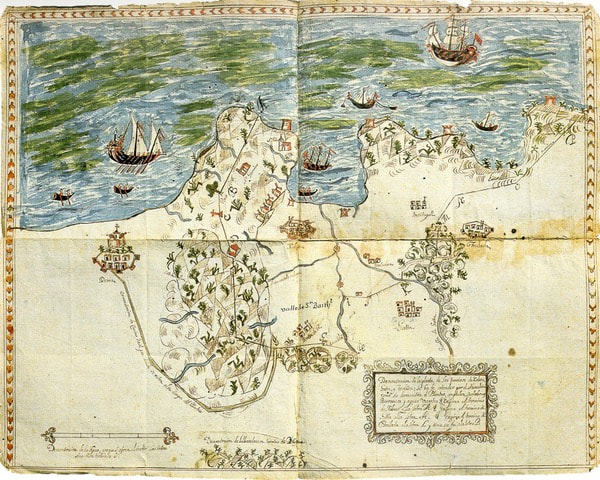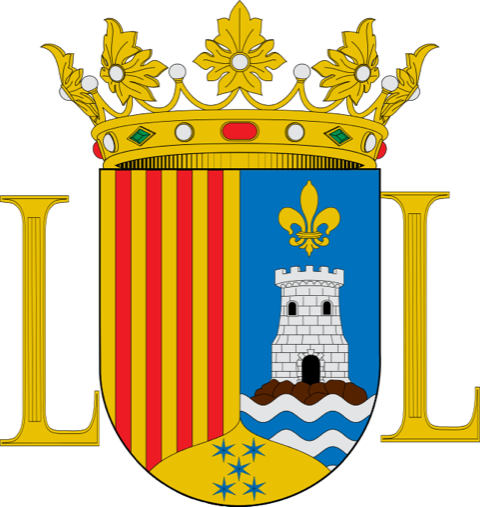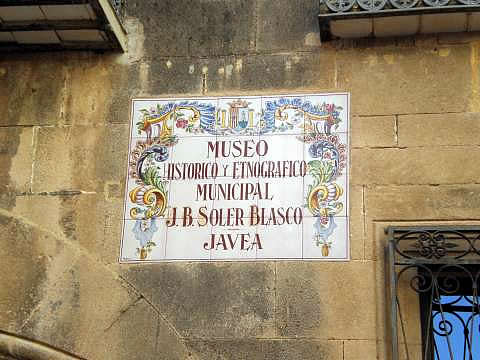|
This phenomenon is often seen all over the world between neighbouring towns - or even countries, for that matter. Nearer home, we also see it between Ondara and Pedreguer and between Gandia and Oliva.
In Roman times, the lands of Xàbia were part of the ager de Dianium, the only municipium that existed between Valentia (Valencia) and Alonis (La Vila Joiosa). Centuries later, in the Islamic era, it also formed part of the territory of the big city of Daniya. With the conquest of Jaume I, the Vall de Xabea, where there were several alquerìas, was included in the general municipality of the castle of Denia. The subsequent creation and rapid development of what we know as the old town of Xàbia (from the late thirteenth century), soon spurred its inhabitants to dissociate themselves from Dénia and to want their independance from it. It was only in 1612 that King Felipe III conceded Xàbia the title of „Villa Real“, just months after Denia had been proffered the title of „ciudad“ by royal privilege. So now at last Xàbia achieved its independence from Denia. However, this only complicated the relationship between the two towns. In the ensuing 200 years lawsuits over several issues abounded between them, but especially over the delimitation of their respective territories. The bone of contention for centuries was the St. Bartolomé Valley, with the alqueria of Benissa de Vi, later called Jesús Pobre, and the delimitation line on the Plana del Montgo. The rivalries between the two towns were not only due to territorial disputes. There were also ideological and political differences. A clear example of this is during the War of Succession. When King Carlos II died without an heir in 1700 there were two claimants to the throne : one was the Archduke Carlos (of the House of Habsburg, Austria), and the other was Felipe de Anjou (of the House of Bourbon, France). Denia sided with the Archduke, whereas Xàbia with Felipe. So when Felipe V ascended the throne in 1710, he gave Xàbia (1713) the dignity-title of „Villa Lealísima“ in appreciation of its loyalty to him.(That also gave it the privilege of using the fleur-de-lys in its coat of arms, which is still there to this day). Today a healthy rivalry can be felt in more subtle ways. Although it can hardly be noticed by outsiders, the inhabitants of the two towns both know it is there. Here are some examples : Denia celebrates "fallas“ in March, as does Valencia. The Junta Central de Fiestas de Xàbia announced not long ago that the June fiestas shall be called "fogueres“ de Sant Joan. Xàbia does not celebrate "fallas“ (god forbid !), but "fogueres“ !! And don´t the Javienses feel indignant when Denia talks of the "gamba de Denia“, referring to the high quality shrimps caught in the waters of Denia and Xàbia ? Or : Javienses are convinced that after seeing the success of the Festival de Jazz de Xàbia, its rival started competing with its own several years later……. And anyway, who has the better beaches. And who the prettiest view of the Montgo ?! Of course the list can go on and on…….
0 Comments
|
ACTIVITIES
Categories |
- Home
- Blogs
-
Projectes
- Premio de Investigación - Formularios de Inscripción
-
Traducciones Translations
>
-
DISPLAY PANELS - GROUND FLOOR
>
- THE STONE AGES - PALAEOLITHIC, EPIPALAEOLITHIC AND NEOLITHIC
- CAVE PAINTINGS (ARTE RUPESTRE)
- CHALCOLITHIC (Copper) & BRONZE AGES
- THE IBERIAN CULTURE (THE IRON AGE)
- THE IBERIAN TREASURE OF XÀBIA
- THE ROMAN SETTLEMENTS OF XÀBIA
- THE ROMAN SITE AT PUNTA DE L'ARENAL
- THE MUNTANYAR NECROPOLIS
- ARCHITECTURAL DECORATIONS OF THE PUNTA DE L'ARENAL
- THE ATZÚBIA SITE
- THE MINYANA SMITHY
- Translations archive
- Quaderns: Versión castellana >
- Quaderns: English versions >
-
DISPLAY PANELS - GROUND FLOOR
>
- Catálogo de castillos regionales >
- Exposició - Castells Andalusins >
- Exposición - Castillos Andalusíes >
- Exhibition - Islamic castles >
- Sylvia A. Schofield - Libros donados
- Mejorar la entrada/improve the entrance >
-
Historia y enlaces
-
Historía de Xàbia
>
- Els papers de l'arxiu, Xàbia / los papeles del archivo
- La Cova del Barranc del Migdia
- El Vell Cementeri de Xàbia
- El Torpedinament del Vapor Germanine
- El Saladar i les Salines
- La Telegrafía y la Casa de Cable
- Pescadores de Xàbia
- La Caseta de Biot
- Castell de la Granadella
- La Guerra Civil / the Spanish civil war >
- History of Xàbia (English articles) >
- Charlas y excursiones / talks and excursions >
- Investigacions del museu - Museum investigations
- Enllaços
- Enlaces
- Links
-
Historía de Xàbia
>
- Social media
- Visitas virtuales
- Tenda Tienda Shop




 RSS Feed
RSS Feed
